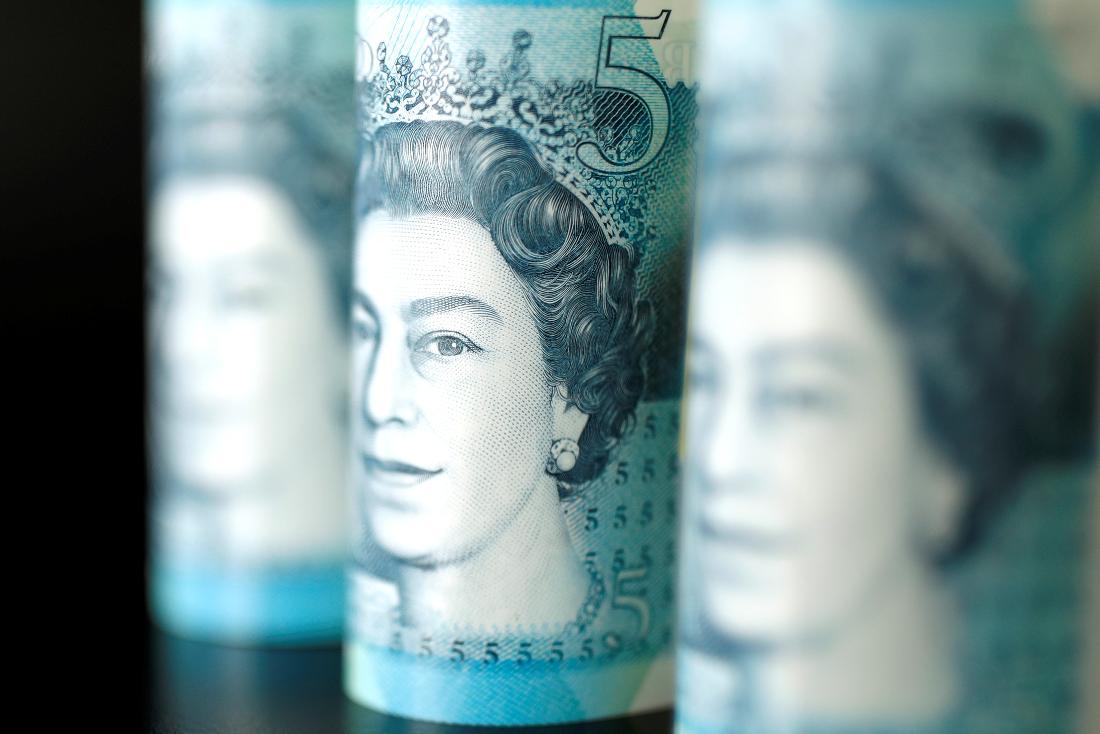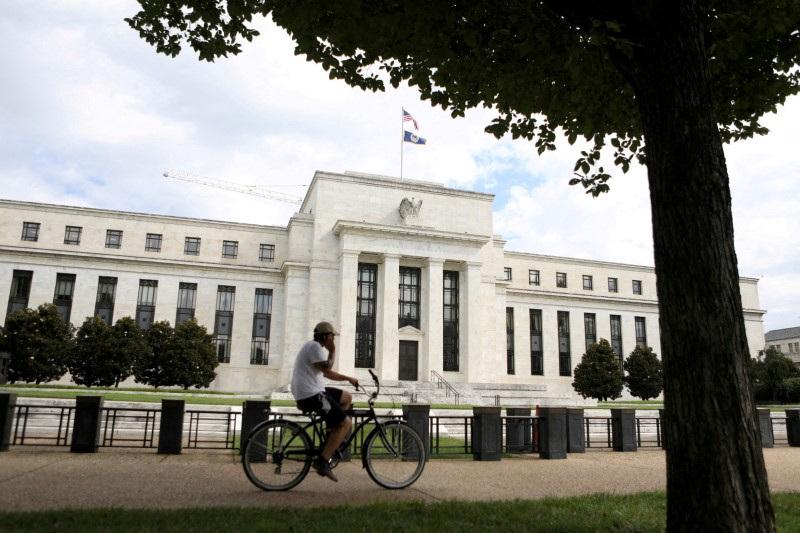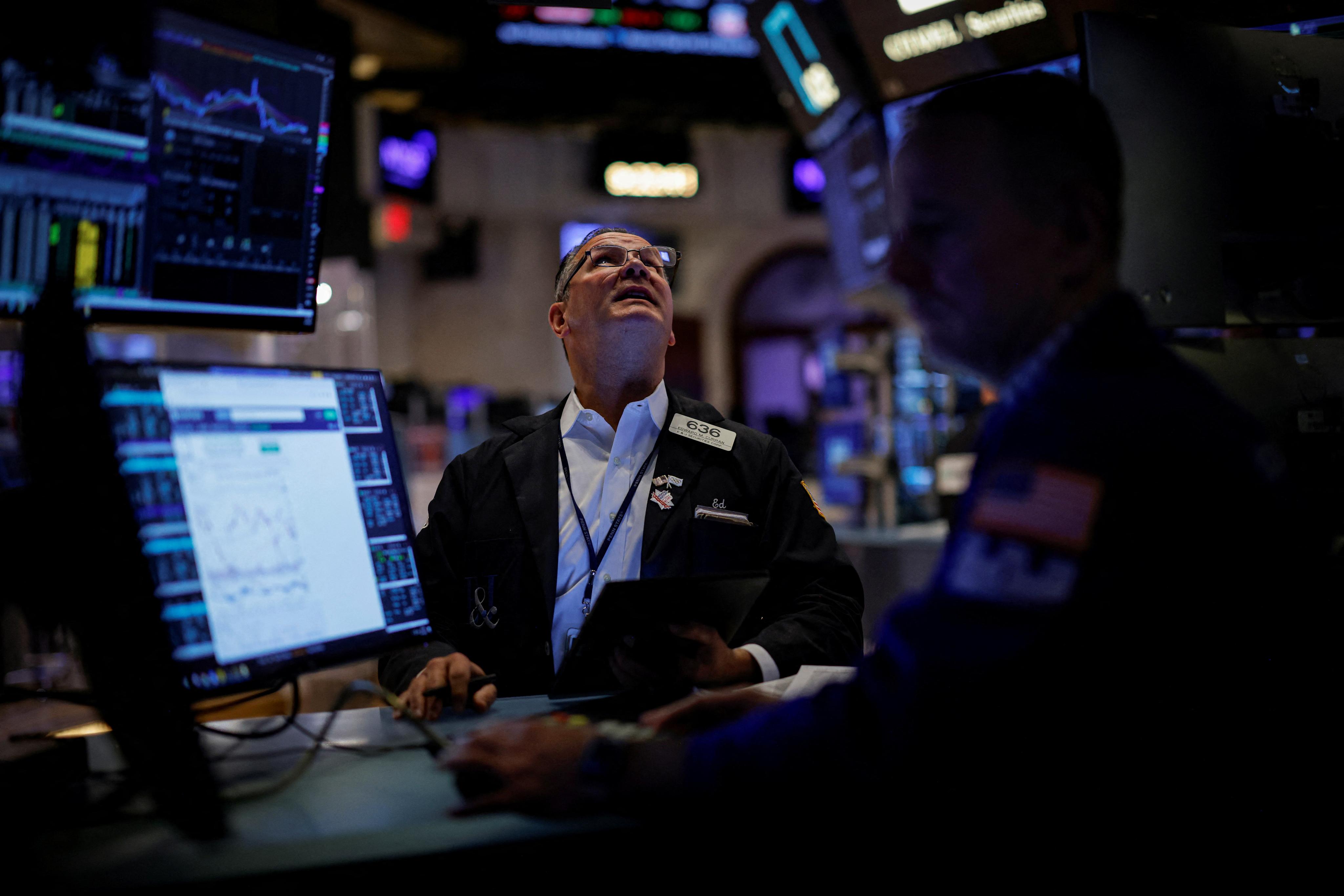
2024-09-18 11:18
GUJARAT, Sept 18 (Reuters) - India's Hindalco Industries (HALC.NS) , opens new tab on Wednesday denied a Reuters report that the company is planning to produce solar modules. "There are no developments of this nature. Any discussions on this topic are purely speculative," the metals firm said, calling the report "false and baseless." Sign up here. https://www.reuters.com/markets/commodities/indias-hindalco-denies-report-co-planning-enter-solar-module-manufacturing-2024-09-18/

2024-09-18 10:25
LONDON, Sept 18 (Reuters) - The British pound rose against the dollar on Wednesday after UK inflation data boosted the market view that the Bank of England will keep interest rates steady on Thursday, in contrast with an expected start to the U.S. policy easing cycle later on Wednesday. Sterling gained 0.49% to $1.3227, a session high, recouping Tuesday's losses. The Bank of England is widely anticipated to keep interest rates at 5% on Thursday, after official figures showed inflation stood at an annual rate of 2.2% in August, unchanged from July, despite a pick up in price growth in the services sector. Meanwhile, industry data showed British supermarket sales growth slowed over the last month as consumers trimmed spending after their summer holidays. "Looking through the Bank of England's range of underlying services measures, we still see some marginal improvement in the data despite the uptick in the headline services measure, with underlying inflation continuing to ease. This is good news for the MPC," said Sanjay Raja, Chief UK Economist at Deutsche Bank, referring to the BoE's Monetary Policy Committee. "That said, today's data won't be enough to trigger a surprise rate cut tomorrow," Raja added. Futures markets now imply a smaller chance of a quarter point cut, at 26%, versus about 38% at the beginning of the week. "Sterling looks pretty strong," said ING currency strategist Francesco Pesole, adding euro-sterling was not likely to jump back to 85 pence for now. The euro slipped 0.25% against the pound to 84.235 pence. "We are still expecting a bit of a weaker year end for sterling," if the BoE starts moving a bit faster with rate cuts, Pesole said. Looking past the MPC decision on Thursday, markets are wagering on 50 basis points of cuts in total from now until the end of the year. The BoE cut rates by a quarter of a point last month. Slow steady progress in reducing inflation "ought to still justify a gradualist approach" in easing monetary policy, analysts at Lloyds Bank wrote in a note. "Arguably what the Fed does and says today matters at least as much for the November MPC outcome as what the MPC says tomorrow," they said. The Federal Reserve is expected to make its first interest rate cut in more than four years at 1800 GMT, with markets pricing a 65% probability of a 50 basis point cut. FEDWATCH The European Central Bank cut rates by 25 basis points last week. Sign up here. https://www.reuters.com/markets/currencies/sterling-rises-after-uk-inflation-data-ahead-fed-2024-09-18/

2024-09-18 10:14
A look at the day ahead in U.S. and global markets from Mike Dolan There's little left to say about the dominant event of the day - other than how to game markets' reaction to the size of the Federal Reserve's interest rate cut later and what Fed policymakers project over the horizon. Few, if any, doubt the first Fed easing of the cycle is now at hand. Wall Street's S&P500 (.SPX) , opens new tab hit a new intra-day record on Tuesday ahead of the decision - lapping up the prospect of lower borrowing costs even as the economy picks up some steam. Stock futures held firm overnight into the big decision. What's not to like? A last-minute economic health-check as Fed officials gathered showed retail sales unexpectedly rising again in August and factory output beating forecasts, confounding more downbeat surveys of manufacturers last month. So much so, the Atlanta Fed's 'GDPNow' model raised its third-quarter growth estimate by half a point to 3% afterwards - on par with the pace the economy grew in the second quarter. And despite the effervescence in markets and buoyancy of the economy, futures are still leaning toward a 50 basis point Fed cut on Wednesday rather than a more regular 25bp move. With 40bp still priced, that puts the chances of a bigger move at 60%. Former Fed economist Claudia Sahm was on Tuesday the latest Fed alumnus to call for the heftier 50bp cut this week - arguing now was the time to act to prevent unnecessary job losses and ensure the central bank's twin goals were met. "This is a Fed that has been very much behind the maximum-employment side of the dual mandate," Sahm said. So, on the face of it, the economy in humming with a big rate cut coming and inflation is back in its box. Those poring over market almanacs see only good things from that. It may be different this time, of course, but the average one-year stock market return after the first Fed rate cut is almost 5% even when a recession occurs. And it's more than 16% when the cuts come without a recession materialising at all - the most likely scenario now facing investors. On the other hand, would the stock and bond markets now sulk if they don't get the 50bp cut favoured in the futures market? For that, we may need to see how the cut matches up with Fed policymakers' 'dot plot' of future rate projections. Markets may quickly brush off a move if it simply pushes the total amount of easing out to coming meetings and expresses confidence about the economy. Some think signs of dissent in the 'dot plot' may be important - not least if it suggests the Fed eased less than some of its policymakers thought it should. And of course there will be attention on the so-called long term dot, which was put most recently at 2.8%. As this is broadly seen as Fed officials' estimate of the sustainable 'neutral' rate that neither spurs nor slows the economy, it's important in calculating Fed thinking on the extent of the cycle. Before we get there, the Treasury market has sobered up a bit - with the two-year yield edging back above 3.60% - more than 10bps above two-year lows hit on Monday. That's been just about enough to hold the dollar index (.DXY) , opens new tab off the year's low for now and above 141 Japanese yen . The yen was reined in further by disappointing Japanese trade data that saw both exports and imports miss forecasts. Stocks around the world generally mixed to positive, in line with Wall Street futures. Underperforming in Europe, UK stocks (.FTSE) , opens new tab lost some ground and the pound pushed above $1.32 as the Bank of England is not expected to follow the Fed on Thursday - likely leaving its second cut of the year until after the new Labour government's first budget next month. Reinforcing that thinking, British inflation held steady in August but sped up in the services sector which is closely watched by the BoE. Even though headline inflation remained steady near target at 2.2%, services inflation climbed above forecast to 5.6%. But as much attention on Thursday may be on the BoE's latest annual estimate for the rundown of its balance sheet of bonds - widely expected to be a targeted 100 billion pound reduction over the next 12 months, as it was last year. A potential boom for the bond market, however, is that repeating that target would mean a 75% reduction in active gilt sales due to a large schedule of maturing debt that would runoff automatically. Canada on Tuesday had much better news on the inflation front, with its CPI rate hitting the central bank's 2% target in August - below forecast and fuelling hopes for a 50bp rate cut from the Bank of Canada next month. Key developments that should provide more direction to U.S. markets later on Wednesday: * Federal Reserve's Federal Open Market Committee announces policy decision, with quarterly economic projections and press conference by Fed chair Jerome Powell * US August housing starts/permits, July TIC data on overseas Treasury holdings * Brazil central bank policy decision * International Monetary Fund First Deputy Managing Director Gita Gopinath speaks in Ireland * US corp earnings: General Mills Sign up here. https://www.reuters.com/markets/us/global-markets-view-usa-pix-2024-09-18/

2024-09-18 10:06
Government uses unconventional measures to meet budget target Experts warn these measures could hurt private investment and raise financing costs Economists see this year's budget target as out of reach BRASILIA, Sept 18 (Reuters) - As Brazil struggles to meet its year-end budget target, the government has become increasingly creative with how it accounts for spending, tax exemptions and fresh revenue, raising concerns among experts about the credibility of its new fiscal regime. While most private economists say President Luiz Inacio Lula da Silva needs to cut spending programs in order to erase the budget deficit as promised, the leftist has been loath to let his foot off the fiscal gas pedal. Instead, his government has been pushing to meet its budget target with additional revenue and an array of unconventional proposals: cleaning out forgotten bank accounts, using a state lender to provide subsidies that lower the cost of cooking gas, and even inventing a new tax exemption for Olympic medalists - measures that have drawn criticism for bending the rules in fiscal legislation. Asked about the concerns, the Finance Ministry said it is committed to hitting the budget target while following fiscal rules rigorously to "guarantee the soundness of public accounts." While the government's measures have fallen well short of the accounting tricks that were grounds for the impeachment of an ally from Lula's Workers Party in 2016, economists warn they could hurt private investment and push up financing costs. "Once bitten, twice shy. Everyone has seen the extent of fiscal data distortions under previous Workers Party administrations, which is why this impacts market sentiment," said Marcos Mendes, economics researcher at the Insper Institute of Education and Research. "You have a large arsenal of maneuvers to avoid the hard task of controlling mandatory expenses," he added. To calm market jitters last year, Lula committed to a new fiscal framework capping spending growth and creating a budget surplus by 2026. For this year, he vowed to eliminate the primary deficit, which excludes debt payments. With just a few months left, most private economists still see this year's target as out of reach, projecting a primary deficit of 0.6% of GDP in a central bank poll, down from last year's 2.4% deficit. More worrying, perhaps, many say the scramble for one-time revenue and off-book spending to meet the target may distract from the more difficult work required to rein in public debt. "Adding value (to the primary result) just to meet the target won't change our fiscal position, it will only undermine the target's credibility," said former Treasury Secretary Jeferson Bittencourt, an economist at ASA Investments. Since the start of Lula's term in January 2023, the government's gross debt has risen by nearly 7 percentage points to 78.5% of GDP in July. A member of the government's economic policy team, who spoke on condition of anonymity, said most officials recognize that short-term measures to rein in expenditures, such as clamping down on fraudulent beneficiaries of social programs, will not be enough to sustain the new fiscal framework in coming years. "Something more structural needs to be done," the source said, adding that more dramatic efforts to rein in social spending would meet stiff resistance from Lula's Workers Party. WORKING THE REF Instead, the impending year-end target has spurred a string of minor debates over the letter of Brazil's fiscal law. When government-allied lawmakers moved to appropriate over 8 billion reais ($1.45 billion) left in forgotten bank accounts by the Treasury, the central bank issued a note arguing the funds should not count toward the fiscal target. The government's coalition in the lower house responded with a provision to include those funds in the budget. The government has also leaned on state lenders to boost social programs without booking the costs in the federal budget. In August, officials proposed a cooking gas subsidy for poor families funded with resources from offshore oil exploration, routed through public lender Caixa Economica Federal. After criticism, they promised to redesign the idea. A similar maneuver, routing funds from the National Civil Aviation Fund through state development bank BNDES to provide loans for airlines, now awaits a presidential signature. While some of the government's budget exemptions have been widely accepted, such as excluding the cost of emergency flood relief and combatting forest fires, others have raised eyebrows. When social media influencers complained about Brazil taxing the financial rewards of Olympic medalists returning from Paris, Lula signed an executive order that exempted the earnings. However, the government argued it did not constitute a tax waiver that needed to be offset in the budget. A technical note from the Lower House's Budget and Financial Oversight Consulting Office said that the measure violated fiscal legislation and a Supreme Court precedent by granting a targeted tax exemption without compensating the fiscal impact. Another official on the government's economic policy team said the size of such a maneuver was less important than the precedent of brushing aside fiscal rules. "A little accounting trick here or there might give a taste for it, and that could grow," warned the official, requesting anonymity to speak freely about internal debates. ($1 = 5.50 reais) Sign up here. https://www.reuters.com/markets/brazils-tinkering-meet-fiscal-target-threatens-dent-credibility-2024-09-18/

2024-09-18 09:45
Bank Indonesia cuts policy rate by 25 bps to 6.00% BI decision comes hours before anticipated Fed rate cut Rate cut to support growth, governor says JAKARTA, Sept 18 (Reuters) - Indonesia's central bank delivered its first rate cut in more than three years on Wednesday, just hours ahead of the widely expected start of the U.S. Federal Reserve's easing cycle in efforts to bolster growth in Southeast Asia's largest economy. Bank Indonesia (BI) unexpectedly trimmed the benchmark rate (IDCBRR=ECI) , opens new tab by 25 basis points to 6.00%, its first rate cut since February 2021. Only three out of 33 economists polled by Reuters had predicted the move, while the rest expected no change. The decision is consistent with BI's expectation inflation will remain low in 2024 and 2025, and the rupiah staying stable, BI governor Perry Warjiyo said. It also aligns with BI's efforts to bolster economic growth, he added. A clearer direction on monetary policy moves by the Fed, a bigger drop in U.S. Treasury yields and tendency for the dollar to ease have given BI the window for the rate cut, he said. "These three factors were very different from last month...so we did not have to wait for the Fed funds rate decision," Warjiyo said. "The time is right," he said. BI will continue to assess room for further easing, the governor said. BI's monetary policy stance is now a balance between stability and growth, Warjiyo said, switching from its previous "pro-stability" stance. The rupiah had been under pressure earlier this year in response to changing risk appetite in global financial markets, but has since reversed those losses against the U.S. dollar to be trading slightly firmer than last year's close. The main stock index (.JKSE) , opens new tab is also up 7.8% so far this year in a sign of returning capital inflows. "Recent rupiah gains and markets pricing in a near certain cut by the U.S. Fed, likely offered BI the headroom to kick-start the easing cycle earlier," said DBS Bank economist Radhika Rao. "For now, we expect one more rate cut by end year." The currency briefly weakened after BI's announcement, but regained its losses to stand at 15,330 per dollar by market close. Warjiyo said BI will continue using its monetary operation instruments to attract capital inflows, as well as conduct market intervention when necessary to support the rupiah. Inflation returned to within BI's target range in mid-2023 and has remained there since. The inflation rate in August of 2.12% was the lowest annual rate since February 2022. The central bank maintained the 2024 GDP growth forecast at 5.1%, the midpoint of its 4.7% to 5.5% range, but growth in 2025 may be higher than the midpoint of its 4.8% to 5.6% outlook range, Warjiyo said. These forecasts, Warjiyo said, suggested the economy was doing well, but it needed further stimulus to grow even faster. BI said among factors for the rate cut was that it would help fiscal financing by lowering bond yields. On Tuesday, a parliamentary budget committee approved a 6% rise in spending for the incoming government of President-elect Prabowo Subianto, who is set to take office next month. Capital Economics' Gareth Leather said inflation is unlikely to emerge as a concern for BI anytime soon, giving the central bank room to further cut rates. The consultancy has revised its outlook for BI's end-2024 benchmark rate to 5.50%, from 5.75% previously, in light of Wednesday's cut and BI's dovish commentary, Leather said. Sign up here. https://www.reuters.com/markets/rates-bonds/indonesias-central-bank-front-runs-fed-with-surprise-25-bp-rate-cut-2024-09-18/

2024-09-18 08:47
LONDON, Sept 18 (Reuters) - While many investors hope falling interest rates will usher in a soft economic landing, others forecast a calm before the storm. Here are hypothetical trading ideas shared by three hedge funds on what is next for the U.S. and global economies at the start of a U.S. easing cycle. Markets fully price in a quarter point rate cut and a 60% chance of a bigger 50 basis point cut later on Wednesday. They said regulations prevented them from revealing their actual trading positions or making recommendations. 1/ CONFIDO CAPITAL * Amplified income strategies * Launched in 2024 * Key trade: Short risk assets, buy protection on high yield credit Brad Boyd, founder of Confido Capital, said the anticipation of lower rates has fuelled rosy equity and credit price levels that creates an asymmetry of risks in the market. He said he would short any kind of risk asset like stocks, the bonds of companies which might have a low-quality balance sheet, real estate or emerging markets. Specifically, he would buy credit default swaps, sometimes likened to a form of insurance in bond markets. A short position bets that an asset's price will fall, while a long position bets on a rise. Rather than pick a particular company, Boyd would take long positions via the index, HY CDX, a basket of credit default swaps, or insurance premiums on 100 high yield bonds in the U.S. In the short term, Boyd warned that markets were overpriced for Fed easing and could take a hit if cuts did not live up to expectations. "There could be plenty of hand-wringing and crying in the streets," said Boyd. 2/ MONROE CAPITAL * Direct lending and alternative credit solutions * Size: $19.5 billion * Founded in 2004 * Key trade: opportunistic buying in secondaries markets Kyle Asher, managing director and co-head of alternative credit solutions at Monroe Capital, would look to the secondaries market to see Fed rate cuts play out. Secondaries markets trade financial instruments such as stocks, bonds and loans -- most often from private equity investors -- but also from any investor selling to another investor. "The rate cuts will buoy many sectors that will benefit from paying lower interest rates on their loans including software, business services and media companies," said Asher. Fed rate cuts typically filter out across the economy, pushing the cost of borrowing for corporates and consumers down. "A lot of the more medium sized private companies have loans trading around 70 to 80 cents which will see their cash flow rise when the cost of borrowing falls," said Asher. As the cost of servicing their debt falls, companies will be able to spend more on measures that boost their production, their growth such as research and development, more marketing and more staff, added Asher. 3/ ANALOG CENTURY MANAGEMENT * Hard tech focused long/short fund * Size: $1.8 bln * Founded in 2018 * Long chip makers for auto and industrial applications Val Zlatev's hedge fund Analog Century Management is focused on hard tech, meaning companies that manufacture semiconductors, communication equipment and system hardware. He divides them into two groups: secular growth companies and manufacturers that are much more exposed to mature applications spending such as the hardware that goes into smartphones and PCs. "Semiconductor stocks exposed to industrial and automotive have been suffering for quite a while. Revenues have fallen and many have technically been in recession already for a number of quarters," said Zlatev. If rates falling rejuvenates industrial spending and makes it easier for consumers to borrow money to buy cars, earnings will expand and that will be reflected in the stock price of these companies, he says. Sign up here. https://www.reuters.com/markets/how-some-hedge-funds-would-trade-rate-cutting-cycle-2024-09-18/
